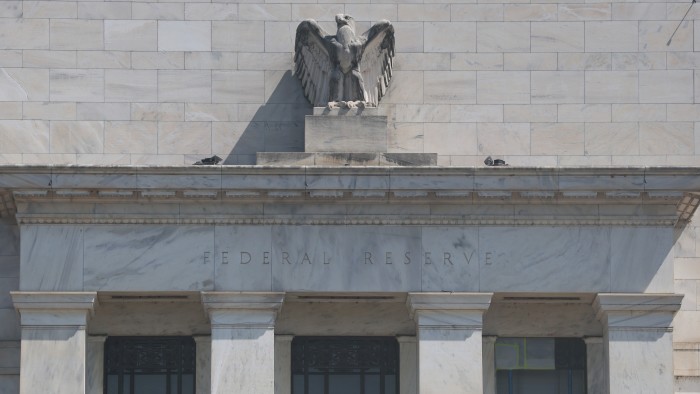Federal Reserve chair Jay Powell faced down one big threat last week, repelling Donald Trump’s pressure for drastic rate cuts even while the US president’s top ally on the central bank’s board was pressing for more.
But the central bank’s leaders will now confront a perilous few weeks as they await a Supreme Court decision on whether Fed governor Lisa Cook can be removed from office while her legal challenge against Trump’s decision to sack her winds through the US court system.
Officials are increasingly worried that if the Supreme Court allows for Cook’s removal, even temporarily, it will give the president the green light to begin picking off the central bank’s most senior officials one by one.
“In many ways, this decision is for all the marbles,” said Lev Menand, professor at Columbia Law School.
The legal stand-off comes after Trump last month moved to fire Cook over allegations of mortgage fraud, which she denies. Cook has since sued Trump and succeeded in getting a federal court to allow her to remain in office while the case is being considered.
Trump’s appeal against that injunction now sits with the Supreme Court, which said last week that Cook’s legal team had until Thursday afternoon to submit its response to the filing.
The president’s attempt to fire Cook has shocked Washington’s economic establishment because it raised deep concerns that Trump wanted to override the central bank’s right to set interest rates independent of political pressure.
“Fed independence is crumbling day by day,” Elizabeth Warren, the top-ranking Democrat on the powerful Senate banking committee, told the Financial Times. “Trump has launched one massive assault against it after another.”
Asked recently about whether the Fed should be independent, Trump said, “It should be. But I think they should listen to smart people like me. I think I have a better instinct than [Powell].”
Trump’s decision to fire Cook — the first Black woman to serve on the Fed’s board — came after federal housing director Bill Pulte, a top Trump ally and fierce critic of the central bank, accused her of mortgage fraud.
The FT has reported that the justice department is investigating Cook, but the agency has not accused her of wrongdoing.
Cook is suing the president over his attempt to remove her “for cause” — a term that has seldom been tested in the courts but is usually interpreted as gross malfeasance.
The Supreme Court recently allowed Trump’s removal of commissioners from independent agencies to stand, although on Monday it scheduled arguments for December on the issue of whether he can fire them at will.
Some legal experts suggest the Fed may be different, pointing to decisions that cite its long history as an independent body.
The next step in Cook’s case could prove pivotal in shaping Trump’s ability to force out some of the other six officials on the Fed’s board — who all vote on interest rates, as well as handling everything from financial regulation to approving the presidents of the 12 regional central banks that make up the broader US central bank system.
“If the [Supreme Court grants Trump’s request], then Cook is in effect out of a job,” said Menand of Columbia. “That could prompt the president to remove other officials.”
The court’s call for the submission by Thursday afternoon could be a sign that it will expedite a decision.
Legal experts say the court could offer some protection to other Fed board members even if it overturns the injunction allowing Cook to stay in her position. A nod to the importance of Trump proving he has “cause” in firing her would provide some reassurance, they say.
“If the reasoning were very broad, the president would be more likely to remove other board members. If the reasoning were narrow, it might not invite further removals,” Menand said.
Trump has spent months hurling insults at Powell, labelling the Fed chair a “numbskull” and a “moron” over his refusal not to slash rates to as low as 1 per cent — from just over 4 per cent today.
However, Trump said this summer that he would be “highly unlikely” to fire Powell “unless he has to leave for fraud, and it’s possible there’s fraud”.
“The markets are incredibly sensitive to the issue of Fed independence and that’s critically important. It’s a very strong argument from the perspective of Lisa Cook,” said Carl Tobias, a professor at the University of Richmond.
“You can make the argument that Trump was elected by the people and he can fire people, but that undermines Congress’s mandate in the statute about Fed independence.”
Powell and the rest of the rate-setting Federal Open Market Committee are holding firm for now.
They backed a quarter-point cut to 4-4.25 per cent last week in an 11-1 vote, leaving Trump’s latest appointee to the Fed board, White House economist Stephen Miran, isolated in calling for a jumbo half-point move.
Miran — who joined the Fed on the morning of the vote — is also an outlier in calling for aggressive action in the months ahead. On Monday, he said the Fed was keeping borrowing costs about 2 percentage points too high, risking “unnecessary lay-offs and higher unemployment”.
That clashed with the majority of officials on the Fed’s latest economic projections, who pencilled in at least two quarter-point cuts this year.
“There’s more to the decision-making body of the Fed than we believed a few weeks ago,” said Elliot Hentov, head of macro policy research at State Street Investment Management. “They’re playing by the rules. The rules of the game stay the same.”
Additional reporting by Emily Herbert in London
First Appeared on
Source link




